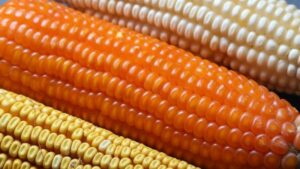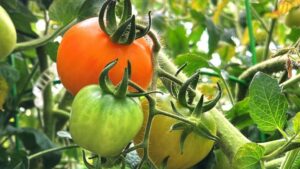Marigolds for Eye Health
During the American Seed Trade Association’s 131st Annual Convention in Indianapolis, Indiana, attendees learned about a marigold breeding project by Ball Horticultural Company that improves eye health.
“Basically, we took a plant that you could grow in your garden and we have bred it for an industrial purpose,” explained Alan Blowers, biotechnology project manager for Ball Horticultural Company. “We can extract the pigment from the flowers and that pigment is used to supplement chicken feed, which gives broilers a nice yellow tone to the skin or a nice yellow tone to egg yolks.”
Today, Ball Horticultural Company harvests African marigolds that are used to make nutraceuticals for eye health. A little more than 20 years ago, clinical and primate studies began to show that two carotenoids, zeaxanthin and lutein, helped when it came to macular degeneration. “When people were given diets that were adjusted or deficient in those, you saw clear beneficial effects when those diets were supplemented with lutein and zeaxanthin,” Blowers said. “Then, the National Institute of Health funded eye studies, which substantiated those results.”
Evidence showed that lutein and zeaxanthin, found in marigolds — not beta-carotene, which is the dominant carotenoid in carrots — are necessary for optimal eye health.
Blowers, who has been working on the marigold project for 10 years, said they needed to tweak the genes and modify a particular pathway so the carotenoids could use used as a supplement.
“We wanted to modify the pathway in how the carotenoids are produced and the nature of the carotenoids that are produced,” Blowers said. “We knew that we could create the mutations that we needed and we knew that we could identify them in the genes. But you’re talking about disrupting some pretty major conserved pathways in the plants. We knew from literature that there could be some effects on the plants that could affect their field fitness. That’s why we were cognizant of the fact that the marigolds needed to be field worthy.”
Blowers’ team began their screening in the field. “If we had the right mutation, but it couldn’t survive in the field, it was of no interest to us,” he said.
Because the end product would be targeted for the natural products market, we felt the end product would be better accepted if it came from a natural breeding process versus a genetically engineered product, Blowers explained, noting that the time to get to market would also be much faster. “We took the path of least resistance,” he said.
Today, these marigolds are turned into supplements and are available under a wide range of private labels, according to Blowers.
“We can do some very innovative things in flower breeding,” Blowers said.












